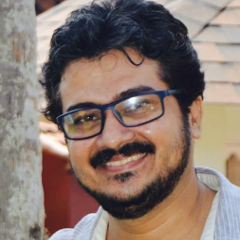BJP vs the rest of Kerala. Are the equations that simple?

Mail This Article
New year dawned on Kerala in an extraordinary situation. The state is going through an unprecedented resistance to the Union government, with the ruling and opposition fronts as well as unallied smaller parties coming together to oppose the Citizenship (Amendment) Act, 2019 and the proposed nationwide National Register of Citizens.
Curiously, the epicentre of political protests in the state capital has shifted from the state secretariat to the Raj Bhavan, the official residence of the governor. Arif Mohammed Khan, who visited the chief minister, former chief minister and a former Union minister at their houses as soon as being appointed the Kerala governor, without caring for the rigours of official protocol, is now busy collecting evidences of protocol violations.
This year is an election year. The elections to the local self-government bodies will be a precursor to next year’s assembly elections. If the Lok Sabha election was preceded by street protests by Hindus against the entry of women to the Sabarimala shrine, the state is now witnessing a larger agitation by minorities.
The Hindus then wanted the central government to override the Supreme Court order which allowed women of all ages to go up the Sabarimala hill. Now the agitators are expecting the Supreme Court to correct the partisan legislation.
The Sabarimala agitation seemed to rock the ruling Left Democratic Front in the Lok Sabha election. The anti-CAA protests would also have political implications in Kerala. Chief minister Pinarayi Vijayan and opposition leader Ramesh Chennithala are headed for a war of words to turn the anti-BJP sentiments to their favour even as they put up a joint front against the centre.
The joint agitation against the CAA resulted in much heartburn in the Congress. Yet Pinarayi wanted to keep the Congress along in the agitation, in a stark contrast to his previous opposition against any understanding with the Congress. He even softened his stand towards the Muslim League, which was much reviled as a communal party. The CPM has invited the Muslim League to be a part of the human chain against the centre’s move.
The state government had an embarrassing moment when the Congress called upon the CPM to object to the draconian Unlawful Activities (Prevention) Act with the same verve.
Though the Congress leadership was successful in firefighting, there are still dissenting voices against the joint protest. A video doing the round on social media features Congress state president Mullappalli Ramachandran calling upon his supporters to oppose the RSS and the CPM equally.
The opposition leader who called a meeting of Muslim organisations invited the Jamat-e-Islami, which was cold-shouldered by the chief minister when he arranged a meeting of parties. Ramesh Chennithala was perhaps trying to claim a pole position, suggesting that the Congress was the only party capable of leading a movement against the BJP at the national level.
The Muslim League is still positioning itself as a staunch ally of the Congress. The party has successfully lobbied the United Democratic Front to form a human map to put up a force as equal as the human chain organised by the LDF.
The BJP is in a bind. Until a month ago, the party leaders in Kerala were boasting of their ability to attract more Muslims to the party. The party has now focused its energies to “explain” the controversial law. District-level workshops have been organised to coach leaders and to send them among people’s forums to defend the party.
The party has also formed a team to talk to opinion leaders in the state. The party, however, is stung by the barbed allegation that it has received a president in governor Arif Mohammed Khan.
The BJP state unit has sent away two of its former presidents as Mizoram governors. They are stumped when the ruling and opposition fronts ask them if they were trying to make the governor into a president.


